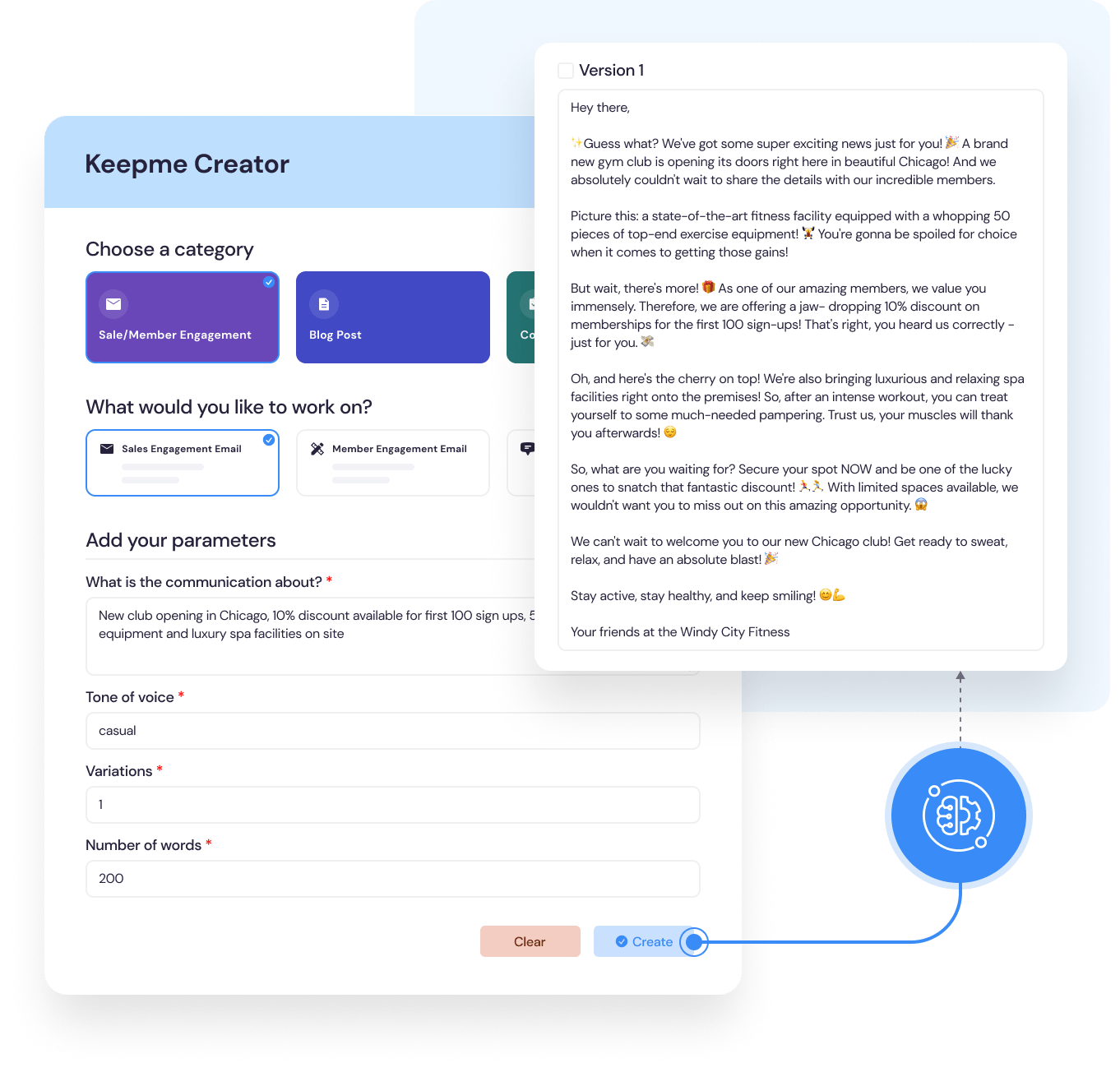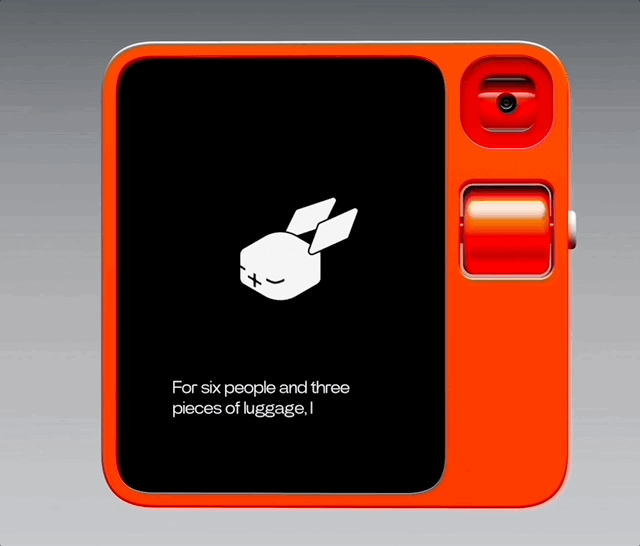As usual, the annual PerformX event was well attended by the UK Fitness industry with a strong Keepme contingent in attendance with Keepme CEO & Founder, Ian Mullane joined by Steffie Bryant, Chief of Staff and Jon Dickson, Director of Sales for EMEA.
AI: Friend or Foe?
At the World Economic Forum, Google’s CEO Sundar Pichai, said that AI is more profound than fire or electricity, and everyone from Goldman Sachs to McKinsey produces reports about the incredible economic benefits AI will bring us. But the question still seems to remain - is AI a friend or foe?
What’s interesting is, AI isn’t new - in fact, it has been around since the 50’s!
With AI being one of the most talked about topics across all industries these days, it’s no surprise the room was so busy for Ian’s session.
Before Ian kicked off his talk, he outlined the three takeaways we wanted to get across to everyone.
An understanding of the different types of AI & how they are applied
An understanding of specific ways AI can be deployed in a fitness club
Some personal examples of how he uses AI everyday to improve efficiency
So let’s dive in…
Different types of AI
These can be separated into two camps that can help us understand them better.
Predictive AI:
Machine Learning
Deep learning
Neural Networks
Prediction is the foundation of any intelligence, providing the ability to learn from past experiences and anticipate future outcomes. The particular capability of the three ‘prediction machines’ above is to use the information we do have, i.e. data, to predict what we do not, and they can do this with incredible accuracy.
Shameless plug here, but that’s precisely what we use it for in our proprietary feature, Keepme Score™
How can this be utilized in a Fitness club?
Member retention is the ongoing challenge of every fitness operator. It always has been and it’s not unfair to believe it always will be. The challenge is, that by the time a member has shown signs they may be at risk, they have stopped engaging, making it incredibly challenging to get them back on track.
Therefore, we need to be able to predict the probability of a member renewal in a timeframe that provides the opportunity to change any potential negative outcomes. To put it more simply, we need to be able to predict a member will leave before they have even considered doing so.
The Machine Learning within the Keepme platform uses a model called ‘Random Forest’ which uses a data set found in a given gym's existing MMS. This can include data on current and ex-members, and by data we mean information from smoothie purchases to newsletter opens to their interest in tennis.
For the sake of this example, we will say a gym has 42 different data points on an individual - such as age, membership type, attendance records, these 42 data points will generate 8.8 million decision trees. When you add together all of the potential outcomes that these decision trees can generate, that’s when we have a highly accurate prediction of what an individual is likely to do. We typically see results ranging from 91-96%, and as the model goes live and continues to be fed the data on actual outcomes, it continues to tune itself and improve further. The clue is in the name - machine learning.
The Secret Weapon: Automations
Now, insights are one thing. But taking action on them is the real game changer, and this is where automations come into play. There never has been and never will be a golden action that is going to fix retention or sales issues. It comes down to consistently taking the correct action at the right time. The good news is that automation capabilities have been evolving as fast as AI tools, and it is now entirely possible to provide tens of thousands of personalized, relevant engagements every hour of every day while seamlessly adapting the member journey in real-time as the member takes actions or more data becomes available.
AI Group 2
Generative AI
Large Language Models (LLMS)
We are all familiar with ChatGPT - potentially this is what comes to mind for the vast majority of people when the term ‘AI’ comes up. During his session, Ian likened LLMs to an ‘incredibly skilled parrot’ . This parrot has been listening to people talk for so long that it has become excellent at generating speech that sounds exactly like a human. It can answer questions, write essays, tell jokes, and even create poetry. It can talk about almost any topic because it's been trained on an enormous amount of diverse text data, like books, articles, websites, and more.
However, this is where the parrot comparison really kicks in. Just like a parrot, an LLM doesn't truly understand the words it's saying. It has learned to generate responses that sound right based on the patterns it has observed in the data it was trained on, but it doesn't have beliefs, opinions, or consciousness. It doesn't know the meaning of the words in the same way a human does.
What differentiates LLMs are ‘modalities’ which refers to if it is single-modal - specializing in generating in a single format e.g text. Or multi-modal - meaning they can work with text, images, audio and speech.
The other thing that differentiates LLMs is size. This means the number of parameters the model has been trained on. The larger the parameters, the more capacity the model has to understand and generate complex language. See below an outline of the parameters each variation of GPT has been trained on as it has become more advanced:
2018 GPT 1 - 110,000,000 parameters
2019 GPT 2 - 1,500,000,000 parameters
2020 GPT 3 - 175,000,000,000 parameters
2022 Chat GPT launched on GPT 3
2023 GPT 4 - 1,700,000,000,000 parameters
But size isn’t necessarily everything. If you want a model trained specifically on certain datasets, then you can do just that which will produce more tailored output. For example, if we were to develop an AI model focused on customer retention in the fitness industry, training it on datasets specifically related to customer behavior, fitness trends, and retention strategies would be far more effective than using a broad, general-purpose dataset.
The final consideration when it comes to a GPT model, is the prompt entered in order to produce the desired output. ‘Prompt Engineering’ is a term becoming more common, it is likely to start showing up on job requirements - and with good reason. The output you get from a GPT model will only ever be as good as what you input, and so those who know how to guide the model correctly will be the most successful Generative AI utilizers.
The origin story of Keepme Creator
We recognized the need for gyms and fitness clubs to be able to produce good, relevant content regularly in order to enhance their SEO. We also recognised that not all gyms have huge capacity for marketing, and some smaller operations may not have a dedicated marketing professional. We have had this challenge expressed to us many times.
Keepme Creator is a content creation platform that differs from Chat GPT by generating content always in your brand voice. It does this by consuming all of your existing content such as blog posts, social posts and your website, to teach itself your brand's style, vocabulary and cadence. In doing so it allows for multiple team members to be able to engage around content creation with you comfortable that the guard rails are in place around the quality of the output.

Creator produces titles (blogs), subject lines (emails), two versions of the content (emails) so you can A/B test and allows you to refine and edit until you are completely happy.
Again, all of this is nothing without automations, content without consistency in delivery is worthless. Having the ability to define who should receive the engagement and then having the certainty that that will happen at the optimal time is an accelerant to campaign performance.
The Future of BI (Business Intelligence)
Generally delivered in the form of a dashboard, BI shows us a bunch of mostly historical metrics around what has happened with little indication to why. With AI, not only do we have the ability to predict those same metrics forward using our prediction machines such as machine learning - but with an LLM attached, we can have the data scrutinized and a narrative presented to us that not only explains what you are seeing, but provides context and additional insights.
Large Action Models (LAMs)
We’ve now all heard of Large Language Models but LAM’s will take things to a whole new level. A LAM is a software agent that is not only able to take instruction but can autonomously make decisions and take actions on your behalf. Examples of what this could mean in action:
If I need an uber for x6 people and x3 suitcases to take me from my house to the airport - tell the LAM Assistant and they will book that, and remove all the manual steps you would normally need to take.
If I want to go for dinner in a certain area of London, with high end Italian cuisine for 2 people - tell the LAM Assistant and they will book exactly that for you.
This is not the stuff of science fiction. LAM’s were launched as part of a new device called the Rabbit R1. You can buy this device now though prepare to wait as they sold their initial 10,000 production run inside a couple of hours. Check it out at Rabbit.tech, it’s exciting stuff.

The Human Race to Adopt AI
Will AI affect my job? How will it affect my team?
These are questions we hear day in day out. What we have already learned throughout this article is that current technology is ‘assistive’, and the way things are headed, technology will soon be able to make decisions and take action. Therefore, undoubtedly, jobs will be affected.
But this doesn’t have to be a negative effect, like the revolutions before it, AI will also refine roles and produce entirely new ones.
"My belief is artificial intelligence will see our sector add roles not see roles go. Here’s why, we have a penetration in the market place of 15%, give or take 1 or 2 percentage points. It never really changes to any great degree. For that to change you need a significant catalyst… Artificial intelligence will be that catalyst.”

Some industries will feel the fall force of the revolution but the fitness industry is not likely to be one of them. In fact, AI will likely generate further roles within the sector. Market penetration within this industry has plateaued at 15% for nearly a decade, and it will take a major shift to see any change of significance. AI could well be that change with its capabilities to improve outcomes, widen accessibility, and provide more personalized customer experiences.
FREE AI Resources
Ian wrapped up his talk at PerformX by sharing a number of AI related learning resources including:
📰 AI Focused Newsletters
📚 Must-read AI Literature
👀 Visual Series to aid understanding of Machine Learning
🤖 AI tools that you can explore
🎓Courses you can complete to brush up on your AI

AI Learning Resources
Here is a selection of guides and recommended reading to sink your teeth into.
---3.png)





